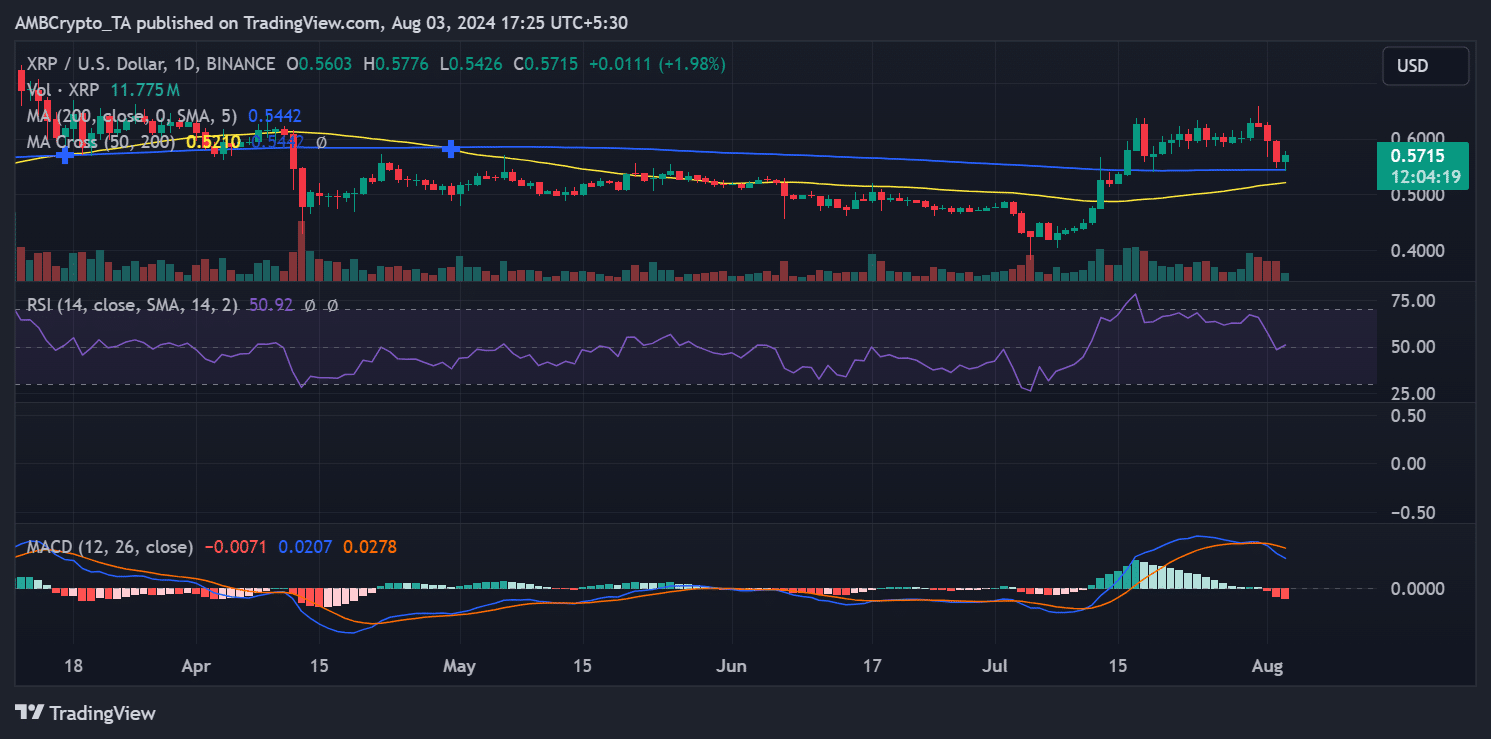While the cryptocurrency market has been grappling with a significant downturn, Ripple (XRP) has shown relative resilience. Despite the broader market weakness, XRP has managed to outperform many of its top-tier counterparts. However, a closer look at market sentiment indicators reveals a more complex picture.
XRP has experienced a comparatively modest decline of approximately 5% over the past week, contrasting sharply with the double-digit losses suffered by Bitcoin, Ethereum, and Solana. This relative strength has been underpinned by a robust support level at around $0.54, which has prevented further price erosion.

Encouragingly, XRP has recently rebounded by nearly 2%, suggesting a potential stabilization of the asset. Moreover, the Relative Strength Index (RSI) has returned to neutral territory, indicating a balance between buying and selling pressures.
Despite XRP’s price resilience, market sentiment towards the cryptocurrency appears to be waning. A recent spike in the funding rate, which often signals bullish sentiment, has quickly dissipated as XRP’s price recovered. This suggests that traders’ optimism may be cooling.
Interestingly, large wallet holders have continued to accumulate XRP, indicating a degree of confidence in the asset’s long-term prospects. However, the overall market sentiment, as reflected by the funding rate, suggests caution is warranted.
Also Read: XRP Lawsuit Update: XRP Price Under Pressure, Ripple’s Q2 Report Offers Insights into Legal Battle
As XRP navigates this period of market volatility, investors will be closely monitoring price action, market sentiment indicators, and the behavior of large wallet holders for clues about the asset’s future trajectory.
Disclaimer: The information in this article is for general purposes only and does not constitute financial advice. The author’s views are personal and may not reflect the views of Chain Affairs. Before making any investment decisions, you should always conduct your own research. Chain Affairs is not responsible for any financial losses.



